HHave you heard of the Sansani News?,” asks 28-year-old Keshav Pandey, leaning over the bar at the tony Chica Loca lounge in Noida. Quite instinctively, our eyes flit to the LED screen. “Khabar wahan nahin nai. Yahan hai (the news is not there but here),” says the bartender, as he stirs up his self-styled summer cocktail with rose gin, tonic water and ice.
The swirl looks like molten quartz about to crystallise, until he dribbles a 30 ml shot of coffee liqueur over it, clouding and muddying it up with what he calls his “dose of reality.” As he garnishes it with a rose bud atop an ice cube, it’s a metaphor for his life that has bloomed from the dust bowl of a village not far from Muzaffarpur in Bihar.
“The chemistry of a drink is not much different from life, it is about balancing an equation,” says Keshav, tipping his fedora, the one he wears for showmanship in a world that doesn’t bother to scratch beneath the surface and see how hope is really a hard-earned struggle to repay the debts of his father, a subsistence farmer.
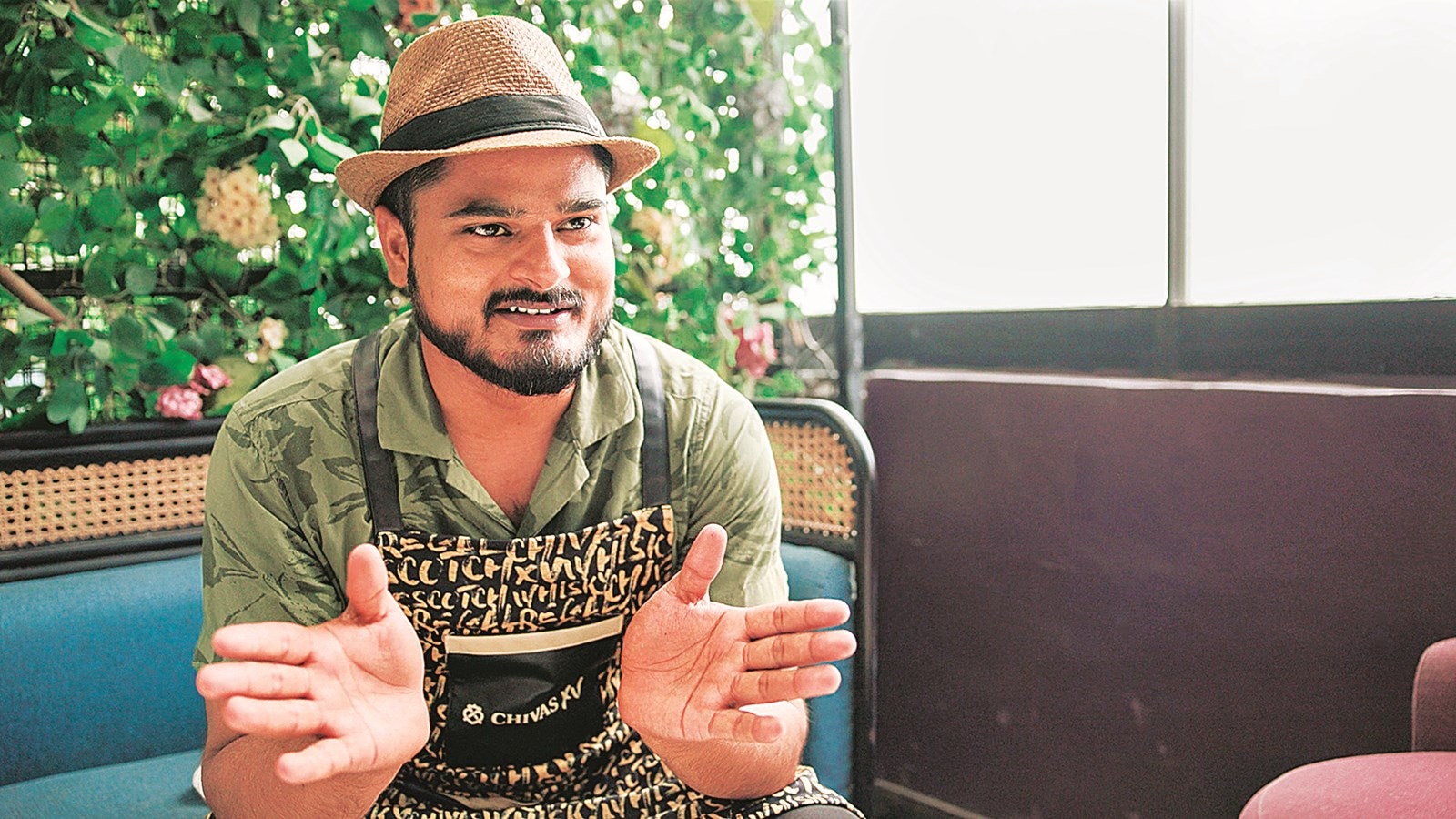 Keshav Pandey, 28, from Muzaffarpur, Bihar (Credit: Chitral Khambati)
Keshav Pandey, 28, from Muzaffarpur, Bihar (Credit: Chitral Khambati)
Or overlooking cultural cliches of his Brahmin upbringing that would ostracize him from making money off alcohol, let aside drinking it. Meanwhile at Gurugram’s Cyberhub, 28-year-old Alem Jamir has just made it to the Top 3 at the Diageo World Class Bartender competition (the global spirit major runs a platform for bartenders to learn and compete).
He’s adjusting his tie, proud of the tribal motif on it. The son of a meat shop owner at Mokokchung town, Nagaland, Alem has risen from being a waiter at Bengaluru’s Conrad Hotel to now having his own fan club as a freelance mixologist in Pune. “I surprised the judges by using Mong Mong pepper, a lemony and woody Naga herb,” he says, whose confidence comes from owning his identity and knowledge about traditional rice beers.

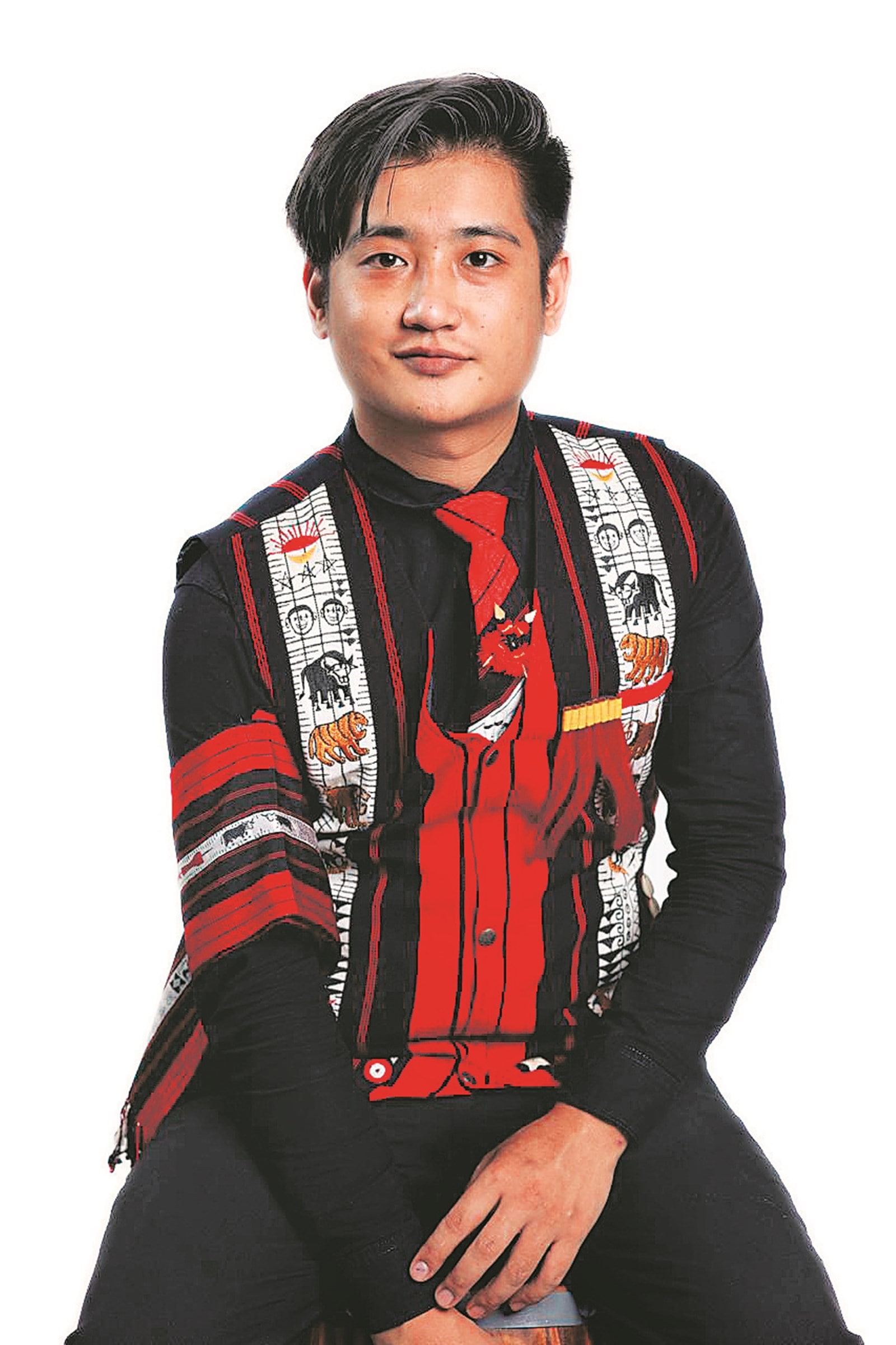 Alem Jamir, 28, from Mokokchung, Nagaland
Alem Jamir, 28, from Mokokchung, Nagaland
A quiet revolution is brewing in India’s nightlife as young people from small towns and villages are becoming professional bartenders. In a successful world peopled and defined by engineers, IT professionals and doctors, these mid-town youngsters are getting global fame and creating their own sub-culture and ecosystem.
It’s not just about a ticket to the high life and good pay or breaking social taboos, it is about the joy of patenting creativity of another kind, the one where you find ways to serve happiness in an unhappy world.
Nobody knows this better than Yangdup Lama, 52, who started his journey from Kurseong in West Bengal, did a stint with Hyatt and VIP weddings in Delhi, and is now co-owner of Sidecar, ranked 18th among Asia’s top 50 bars.
Nicknamed the ‘Monk’ for his wisdom, he says, “Where do students who aren’t into science, academics or management or cannot afford professional training go? Bartending is that bridge to make ends meet. It is as creative as the arts, as precise as science and as popular as a Bollywood film.”
Lama, who is currently working on a cocktail called Maggie Point, inspired by Maggie flavors at pit stops in the Himalayas, finds bartending the quickest way to double incomes. “From Rs 25,000 at the entry level, you can easily double it in two years if you are a skilled artist.
You become a bar manager, consultant, sommelier or a brand ambassador for spirit companies. If you win an international championship, you get to travel the world. The sky’s the limit,” he says.
Schooled by life, being the best is not an option but a necessity for aspirant youngsters who have taken the leap of faith. “That’s why they can hold fame with their patience and empathy, drawing from experiences that are seared into their being,” adds Lama.
Most of them have a rags-to-riches story. Recalls Pandey, who now manages Chica Loca, the lounge bar owned by actor Sunny Leone, “I walked 6 km to a government school because it was free, and worked hard for a scholarship to pursue BCom but there were too many degree-holders and no jobs.
On my cousin’s advice, I took up a job as a server at a hotel in Lucknow because it offered free food and accommodation. I could send my salary back home.” Waiting tables, doing dishes and serving courses, he watched the bartender as everyone crowded around him, showering him with tips for a well-made drink.
Pandey halved his living costs, signed up for a bartending course and did overtime by helping the bartender on busy nights.
Circumstances shaped the journey of Hemant Pathak, 36, who is among New York’s celebrity bartenders at the award-winning Junoon and Jazba restaurants. “Growing up in Pithoragarh, Uttarakhand, I went to a Hindi-medium school that didn’t even have a mid-day meal. My school-teacher father taught me the English alphabet.
Once a week, I would go to the Lunthi Pustak Bhandar to pick up the latest edition of Employment News,” he tells us over Zoom. As his friends made some headway with hotel management, he signed up with an institute in Dehradun and made it to Taj Palace in 2008 on a Rs 5,000 paycheck. “I memorized English lines, started with mocktails and carving fruits at Masala Art. That skill got me to the Blue Bar where I trained under ace mixologist Nick Hawkins, and together we made it the country’s best cocktail bar in 2010,” says Hemant.
But passion was born when he won the Diageo championship in 2011 and judges nudged him to move to New York. “I quit Taj, liquefied the little savings I had and landed in New York. I got a job with a steakhouse in Long Island which didn’t take off and I was homeless overnight. Just a month short of my tourist visa expiring (October 2012), I did dishes and helped around a restaurant at Jackson Heights for cash. I stayed with an elderly Tamilian couple as a paying guest and shared a room. Seeing my credentials, my roommate referred me to Rajesh Bhardwaj, the owner of Junoon, whom he happened to know. It was fate,” says Hemant.
Junoon’s wonderful spice room, all of 18,000 sq ft, treasured every Asian herb. “Their aromas fed my curiosity and I got lost creating concoctions with them,” he says. That’s how his signature cocktail, Mumbai Margarita, made with mango, hibiscus, tequila, chilli, rose and lime, was ranked second among New York’s top seven cocktails in 2017.
What did the trick was his mother’s Pahadi salt — rock salt ground on stone with a hint of garlic and coriander leaves, sun-dried and dusted on the rim of the glass.
That dream-chasing is not futile has been proved by Aman Dua, 36, consultant beverage programmer at The Beer Library, Bengaluru. His father was a vegetable vendor and mother, a Liberty shoe factory employee at Gurdaspur, Punjab. He couldn’t continue college even though he wanted to be a journalist.
“I became a stringer for Punjab Kesri, reporting crime, at Rs 300 a month. So when I got a Rs 1,800 job offer at McDonald’s (where I learned English) at Savoy Greens, a food court on the Karnal highway, I moved. This was 2008,” he says.
That’s where he chanced upon an Australian tourist, who showed him flair-bartending videos. “These guys juggled and flipped bottles and glasses, flamed up spirits or flash froze them.
It was nothing less than an orchestra performance with the bartender being the conductor,” says Aman, who saved Rs 35,000 to sign up for a bartending institute in Delhi. Soon, it was a torrid run across Delhi, NCR, Hyderabad and now Bengaluru.
“The hunger to froth up happens from denial and suppression. In 15 years, I have traveled the arc from someone who didn’t know what a burger was to understanding whether a sea bass or salmon will go well with wine, sherry or whisky. Which other profession could have given me a chance to experience a whole new world?” asks Aman, as he adds a dash of kewra to the Coorg coffee liqueur-infused cocktail, his innovation.
The bar has also turned into an equity platform for women, who unlike other professions, have pay parity with men. Aashie Bhatnagar, 26, the star attraction of Pune’s Cobbler and Crew, wanted to be a fashion designer while growing up in Moradabad, Uttar Pradesh. She even got selected at NIFT, Shillong, which her mother felt was too far from home.
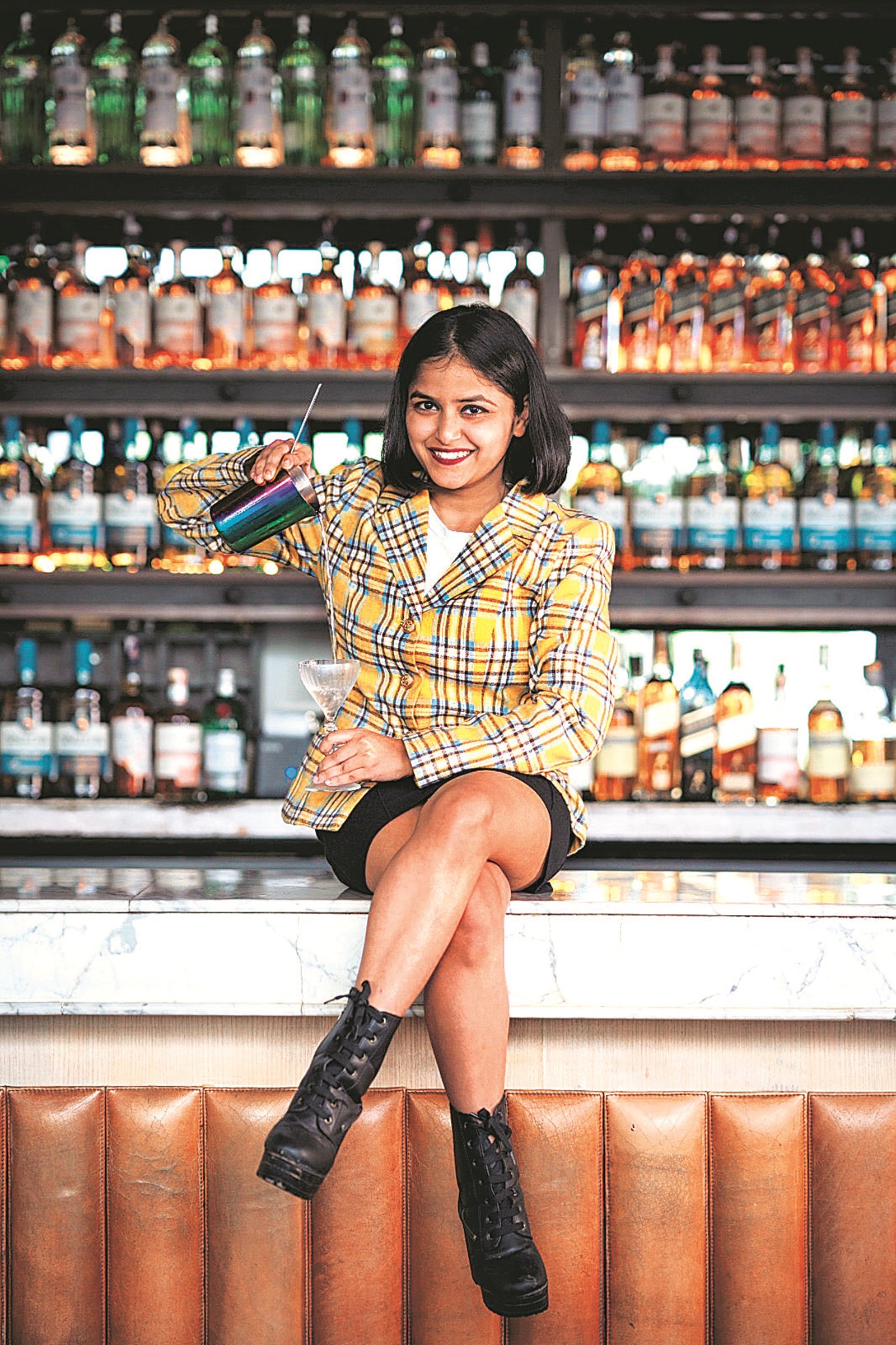 Aashie Bhatnagar, 26, from Moradabad, UP.
Aashie Bhatnagar, 26, from Moradabad, UP.
She then enrolled at the Kuckreja Institute of Hotel Management in Dehradun as an alternative option. It was during her training at a hotel that she was fascinated by the shape of cocktail glasses. She volunteered to wipe them so that she could see what goes behind the counter.
That’s when she played with spirits, impressing customers with a flourish or two Devouring books on mixology after her shift ended at 2 am. Last year, she became the only woman and Indian to feature in Diageo’s top 12 global bartenders.
Although women bartending was legalized in India in 2007, taboos exist about women becoming the target of male harassment and drunkenness. But Aashie has a counter question: “If women can be fighter pilots, why not bartenders? Isn’t it safer?” she asks, always shielded by male colleagues on a busy night, a fact that made her mother and brother come around her career choice.
“I am not the first. Many have come before me and the bar owners are always vigilant. Besides cocktails are genderless as they are about touching the soul,” she says.
For her, spirits are a swirl of escapism, imagination and color. “I guess the hidden designer in me took wings and the spirits became my material,” says Aashie, who is popular as “pocket dynamite.” Given her tiny frame, the bar owners have resized her counter so that she can work deftly.
“Cocktails carry the history of people’s innovation with tradition,” says Aashie, who actually has more loyalists than her male counterparts. “My clientele is multi-generational. A 55-year-old Army man loves my martinis and brings his daughter for lessons,” she adds.
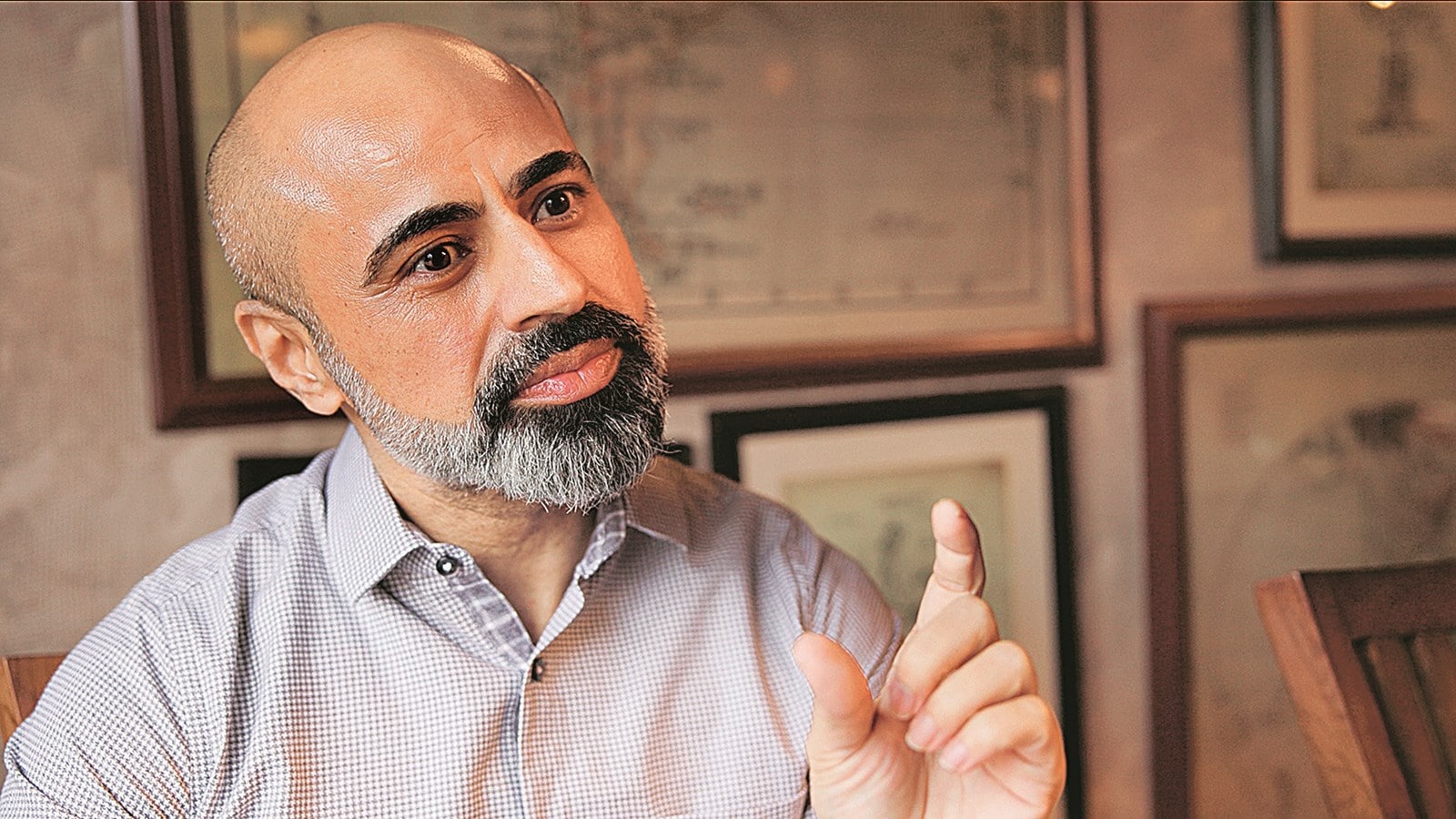 Shariq Khan, 43, from Aligarh, UP (Credit: Chitral Khambati)
Shariq Khan, 43, from Aligarh, UP (Credit: Chitral Khambati)
If for some bartending began as a way to get their lives on track, for Shariq Khan, 43, from Aligarh, it was about off-tracking.
Born to privilege in a family of engineers, schooled at DPS Mathura Road and intending to do BCom at SRCC, he always wanted to be a chef.
“I dropped out, did a diploma in hotel management, went to Mumbai in 2002 and signed up for classes with mixologist Shatbhi Basu as part of my F&B training. That’s when I realized that a bartender commanded more respect than a chef. Since I understood flavors, I would ask my guests their favorite food and customize the drink to their palate. It’s a lot of chemistry that algorithms wouldn’t understand. But I like human interactions, easing people’s pain when they have nobody to talk to and share their joys. For all you know, somebody could be having their last drink. I understand the meaning of dard now. This bond is my greatest takeaway,” says Shariq, now an event manager at Sidecar.
Although he had a hard time getting his father to at least reconcile with his profession, he doesn’t drink socially except when he is required to taste on the job. But he has his extended family of the boys he mentors along with Lama, who now runs a bartending academy in Delhi’s Vasant Kunj and has rented an apartment near his GK I bar for out-of-towners.
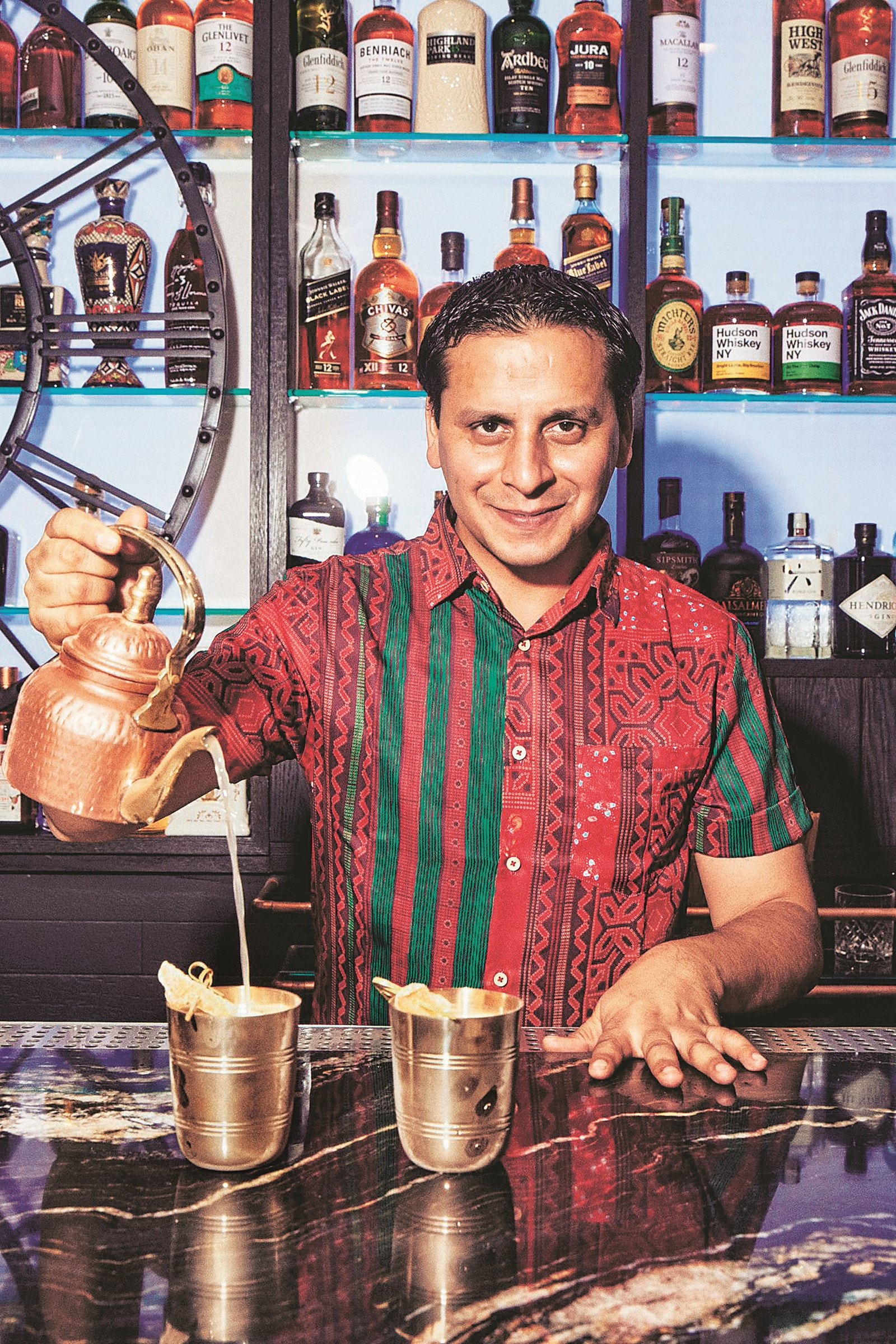 Hemant Pathak, 36, from Pithoragarh, Uttarakhand
Hemant Pathak, 36, from Pithoragarh, Uttarakhand
All of them are nurturing their roots, grooming talent in their hometowns. Hemant does pro-bono work, lecturing students for free and Aman is planning a cooking academy for 40-plus homemakers. Meanwhile, somewhere in Bengaluru, Alem listens to Freddie Mercury’s ‘I want to break free’ on the loop.
A fan of the Japanese anime hero Ryu Sasakura, he lives by his idol’s mantra: “There are two types of professions that must not at all deceive the customer. One is the physician, one is the bartender, one for the body, the other for the soul. You’ve got to be honest. How else can you rescue people?”
